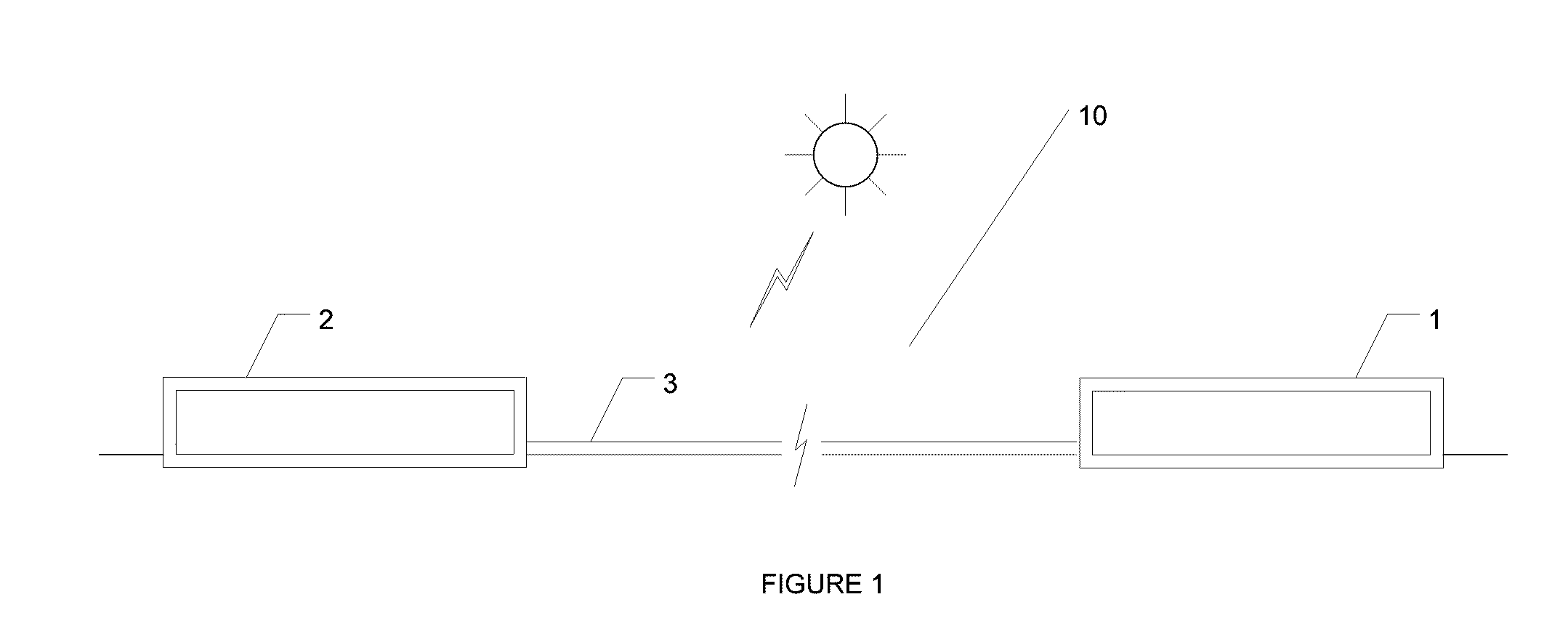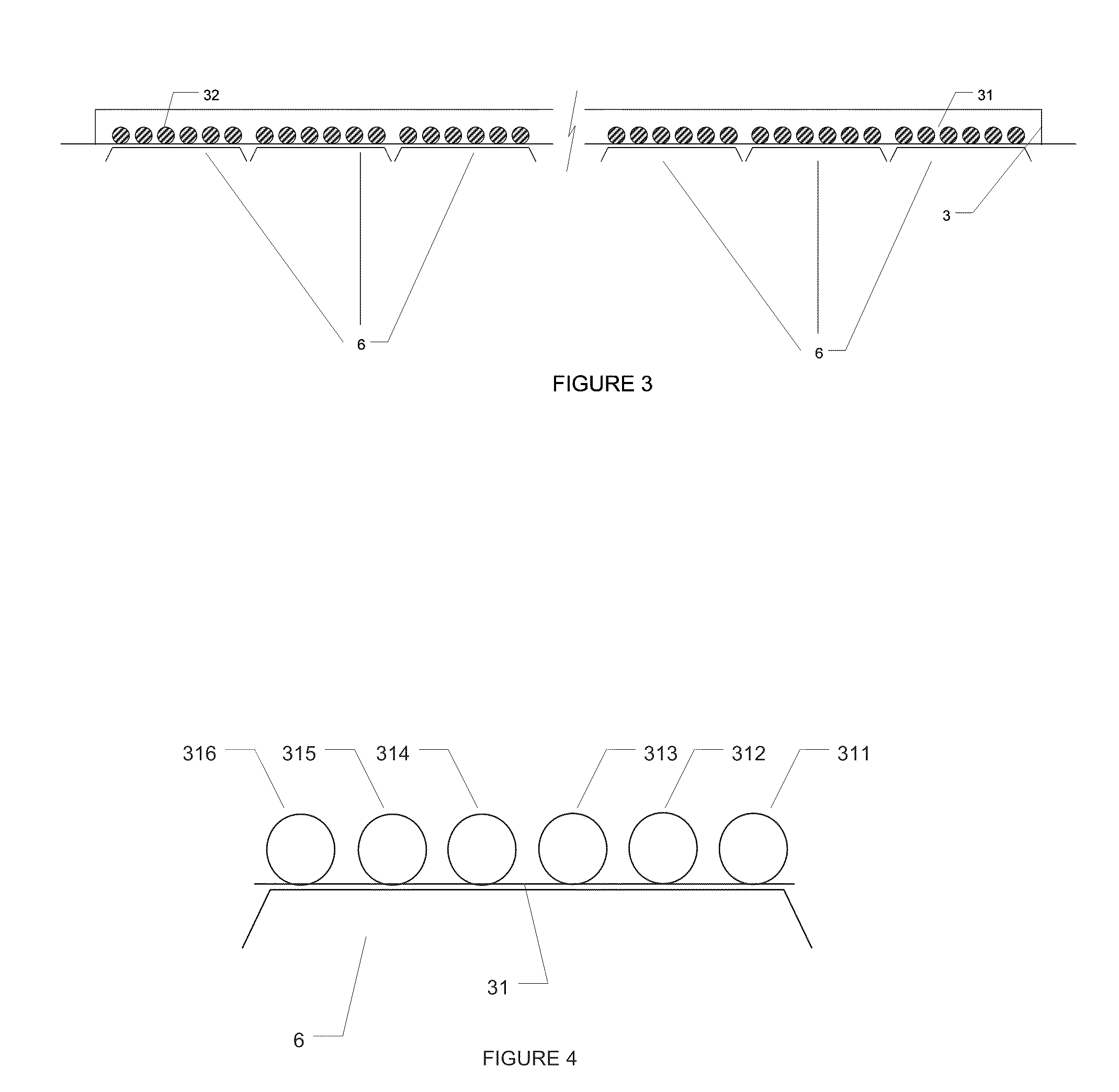Method and Apparatus for Providing a Photobioreactor
a photobioreactor and photoreactor technology, applied in the field of microalgae and cyanobacteria, can solve the problems of insufficient biofuel production yield, negative side effects, and ineffective cropping, and achieve the effects of low construction, operation and maintenance costs, and high production rates
- Summary
- Abstract
- Description
- Claims
- Application Information
AI Technical Summary
Benefits of technology
Problems solved by technology
Method used
Image
Examples
Embodiment Construction
[0041]Turning to FIG. 1, one of the illustrated embodiments of the invention provides for a tubular photobioreactor 10 open to atmospheric pressure which comprises a horizontal tube set 3 disposed between a first receiving channel 1 and a second receiving channel 2 designed for massive algal / bacterial production. An aqueous solution contained within the receiving channels 1, 2 is circulated by a first fluid moving device 11 and a second fluid moving device 21 respectively as best seen in FIGS. 2 and 7.
[0042]In one embodiment of the invention, the horizontal tube set 3 of the photobioreactor 10 comprises a plurality of subsets or “ramps”31, 32 of tubes as seen in FIGS. 2, 3 and 7. For definitional purposes, ramps comprising the right-hand hemisphere of the horizontal tube set 3 as seen in FIG. 2 are denoted with reference numeral 31, while ramps comprising the left-hand hemisphere of the horizontal tube set 3 are denoted with reference numeral 32. Each ramp 31, 32 in turn comprises a...
PUM
 Login to View More
Login to View More Abstract
Description
Claims
Application Information
 Login to View More
Login to View More - R&D
- Intellectual Property
- Life Sciences
- Materials
- Tech Scout
- Unparalleled Data Quality
- Higher Quality Content
- 60% Fewer Hallucinations
Browse by: Latest US Patents, China's latest patents, Technical Efficacy Thesaurus, Application Domain, Technology Topic, Popular Technical Reports.
© 2025 PatSnap. All rights reserved.Legal|Privacy policy|Modern Slavery Act Transparency Statement|Sitemap|About US| Contact US: help@patsnap.com



